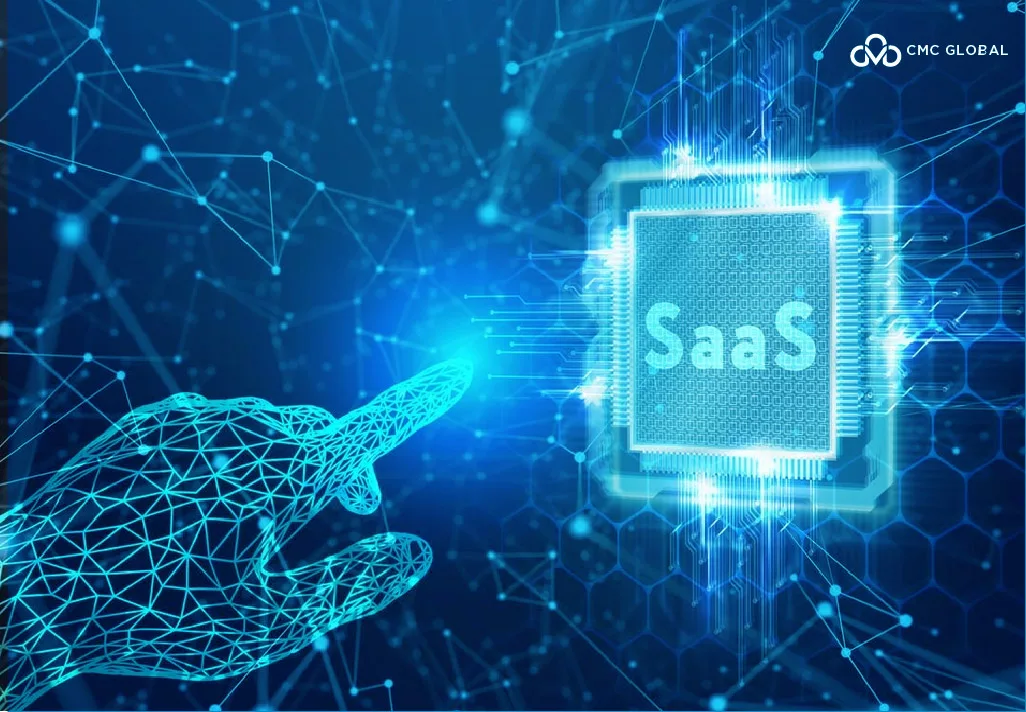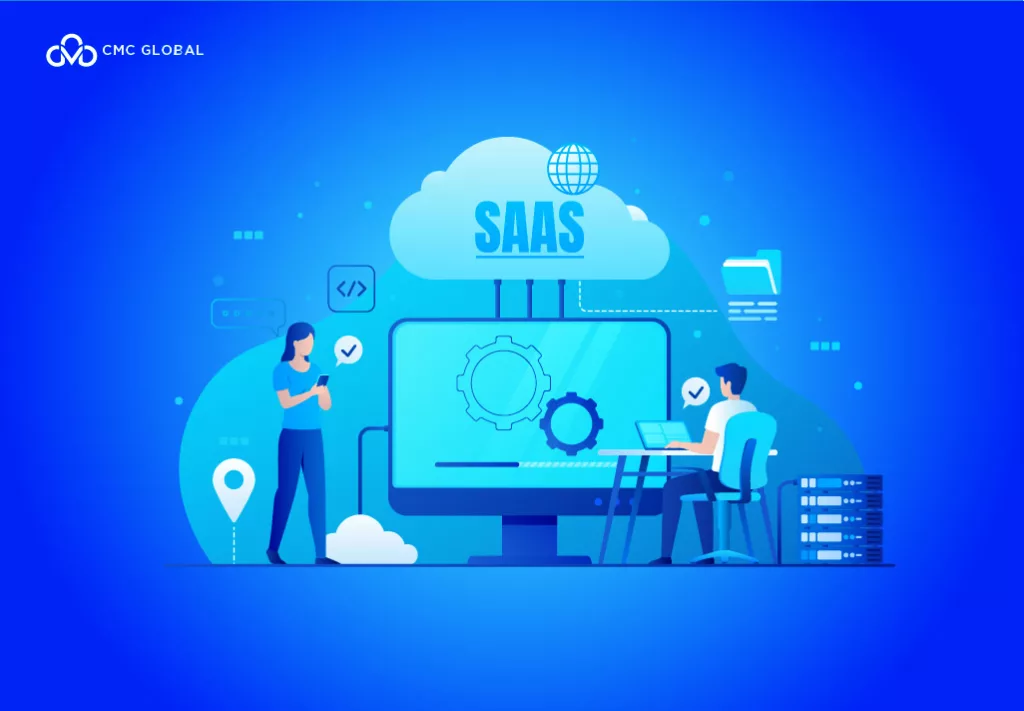Besides artificial intelligence and blockchain, cloud computing is now leading the digital world. Being a cloud-based service, Software as a service (SaaS) delivers software applications to the end-users via the Internet. SaaS brings numerous benefits to all businesses, especially when it comes to cost and flexibility.
Today, let CMC Global get you a clearer understanding of SaaS, SaaS examples, and its pros and cons for the post-COVID-19 future.
1. What is SaaS – Software as a service?

Software as a service is a cloud service model which is created and centrally hosted by the providers. Instead of downloading the application, customers can access it via the internet after paying a recurring subscription fee (monthly, quarterly, annually, etc.).
To put it simply, SaaS allows data to be accessed from any device with a web browser and internet connection. In this type of web-based model, the servers, databases, and code that make up an application are hosted and maintained by the software vendors.
SaaS is a ubiquitous method to deliver numerous business applications, such as office and communication software, accounting programs, customer relationship management software, etc.
2. Some popular SaaS examples
The thing about the SaaS model is that it isn’t downloadable or installed on user devices such as computers or mobiles, which is totally different from traditional software. SaaS is near you more than you can imagine and is among the leading cloud computing applications.
Microsoft Office 365
You may be familiar with the signature Microsoft productivity applications such as Word, Excel, and PowerPoint. And yet, the cloud-based Microsoft Office 365 has dramatically expanded the Office suite’s parameters as it allows users to create, edit and share content from their device in real-time regardless of moderns and systems, connect with colleagues and customers across a wide range of tools such as email, video conferencing.
HubSpot
Every business knows about Hubspot as it is the leading SaaS tool for many enterprises, marketing agencies, or software companies. Hubspot has it all, from sales, marketing, CRM, and CMS, to services software to help organizations manage all phases: attract visitors, convert leads, close deals, and take care of old customers.
Google Apps
Google is long gone from its search and advertising roots to evolve into a host a comprehensive suite of productivity tools. Google Apps includes everything a workplace ever needs, from custom professional email, spam protection, Google Drive, shared calendars, and video meetings.
As the cloud-based document storage solution it is, Google Drive enables users to access files from any device, edit them in real time and share them instantly with colleagues.
Canva
Canva is somehow a Google Docs file but in terms of design. It is an online design tool that helps users create any kind of content they want quickly and easily. Built with a drag-and-drop interface, it is a helpful SaaS tool with a lot of templates so that you can simply edit, save, share, and download a copy or publish on social media immediately (just like you can email right from a Google docs file.
What makes Canva a great SaaS example is that the free version gives you much room for creation and flexibility. In 2019, Canva had more than 15 million active monthly users.
For this and other Saas examples, software as a service is superior to on-premise software, which is acquired by businesses through a perpetual license.
3. Benefits of Software as a service (SaaS)
By taking advantage of the Internet of things (IoT), software as a service increasingly dominates the technology market, with 73% of organizations around the globe saying that nearly all their apps will be SaaS by 2020 (according to the research of Finance online). Here are the competitive advantages making SaaS become one of the most popular cloud service models.
Cost saving

Software as a service can eliminate the money customers spend for the deployment or installation of a large infrastructure locally. Additionally, the costs of periodic upgrades and maintenance are drastically reduced since software and hardware license costs in a shared and multitenant environment are low as opposed to the traditional model. It means that customers can invest their budget in other fields while still benefiting from a modern, efficient, and secure service.
Business agility improvement

Business agility is the ability to adapt rapidly and cost-efficiently in a fast-changing business environment. SaaS can drive business agility by reducing time to benefit. Strong evidence is that it usually takes weeks or months for a business to set up and develop software, while SaaS is ready in a few hours in the cloud. Thus an IT systems administrator does not have to spend a large amount of time installing as well as managing, and supporting infrastructure.
Moreover, in this fast-growing digital world, the flexible infrastructure that SaaS offers can enhance agility, contributing to a scalable business. As a cloud-based application, SaaS solutions reside in cloud environments that have integration with other SaaS offerings. It couples with the periodic and latest upgrades from the providers, allowing SaaS to serve the increasing demand of a business to adapt quickly and effectively to the markets. Therefore, SaaS does move a company significantly along the path to becoming agile, one of the most critical to business survival.
Easy scalability
Cloud service, in general, allows enterprises to ramp their service or features up and down upon request. SaaS is no different.
See how many types of clouds and what you need to know.
Accelerated feature delivery

Cloud services allow enterprises to make changes to their services and/or features, move them up or down upon request, and SaaS is not excluded. That is especially important for enterprises whose businesses are cyclical in nature, as well as for organizations that are growing quickly.
SaaS applications are more frequently updated than any traditional software thanks to the below factors:
- The application is centrally hosted, which means the person to decide an update is the provider, not the customer.
- SaaS application has only one single configuration, accelerating the development testing process.
- With only one version, the application vendors do not have to expend resources to update and maintain backdated software versions.
- The vendor has access to all customer’s data, expediting design and regression testing.
- They also have access to user behavior within the application. This makes it easier for them to identify areas in need of improvement.





